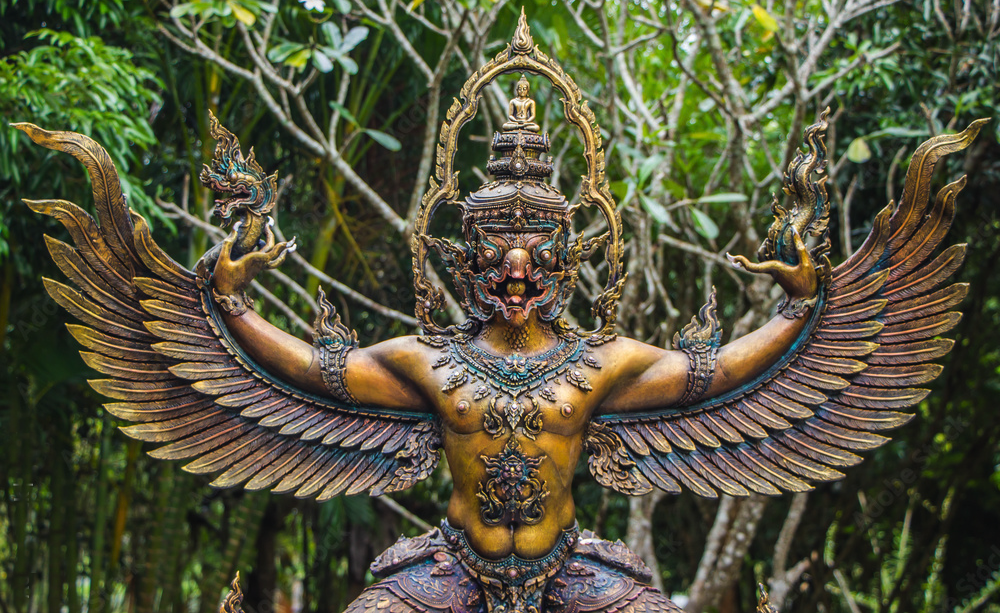In Hinduism, Buddhism, and Jainism, Garuda is a mythical bird or animal that looks like a bird. Garuda is known in Hinduism as the king of birds and the god Vishnu’s mount. He is often shown as a big bird with the face and beak of a human and the wings and claws of an eagle.
Garuda is a mythical figure & it is hard to say for sure where he came from. People think that the story of Garuda and his relationship with Lord Vishnu may have started during the Vedic period, which lasted from about 1500 BCE to 500 BCE. But it may be hard to know how old the Garuda myth is because it was told orally from generation to generation for hundreds of years before it was written down.
Garuda is talked about in the Rigveda, the Mahabharata, and the Puranas, which are all very old Hindu books. Garuda is mentioned as a lesser god in Rigveda, which is one of the oldest holy texts in Hinduism. But in later texts like the Mahabharata, Garuda got more attention and was named Lord Vishnu’s mount.
Garuda has been a very important part of Hindu mythology for a very long time, and many Hindus still worship him today.
In Hindu mythology, Garuda was born to the sage Kashyapa, who was married to Vinata. Vinata also had a son named Aruna, who became the sun god Surya’s charioteer. Garuda was known for his great strength and speed, and he could fly faster than the wind. People also thought that he could change his shape and size at will.
Garuda is a hero in many Hindu stories. He fights against evil and protects the innocent. He is often shown fighting demons and other threats to the universe while carrying Vishnu on his back. In some stories, Garuda is also said to have stolen the nectar of immortality from the gods to free his mother from slavery.
Garuda is also an important figure in Jainism and Buddhism. Garuda is called the “great bird” in Buddhism. He is linked to Prajnaparamita, which means “the perfection of wisdom.” Garuda is called Garutmat in Jainism. He is sometimes shown as a way for the Tirthankaras, or spiritual teachers, to get around.

